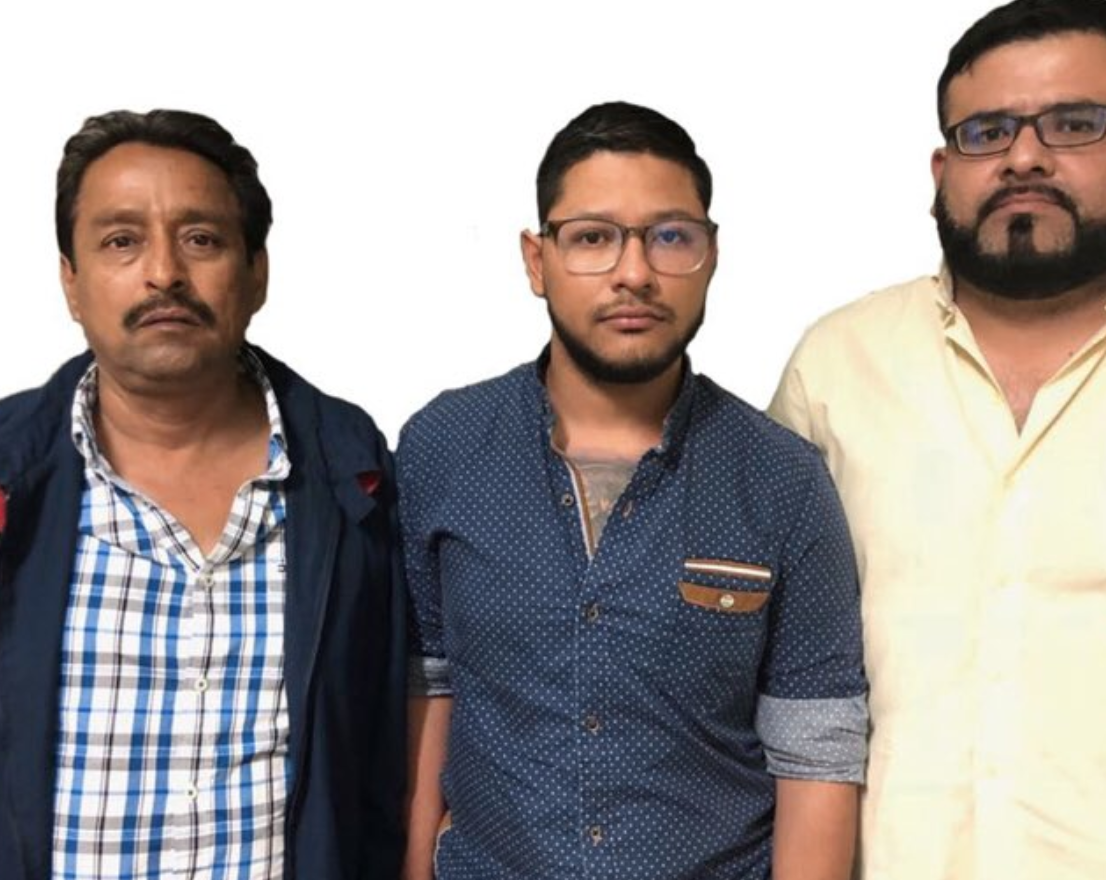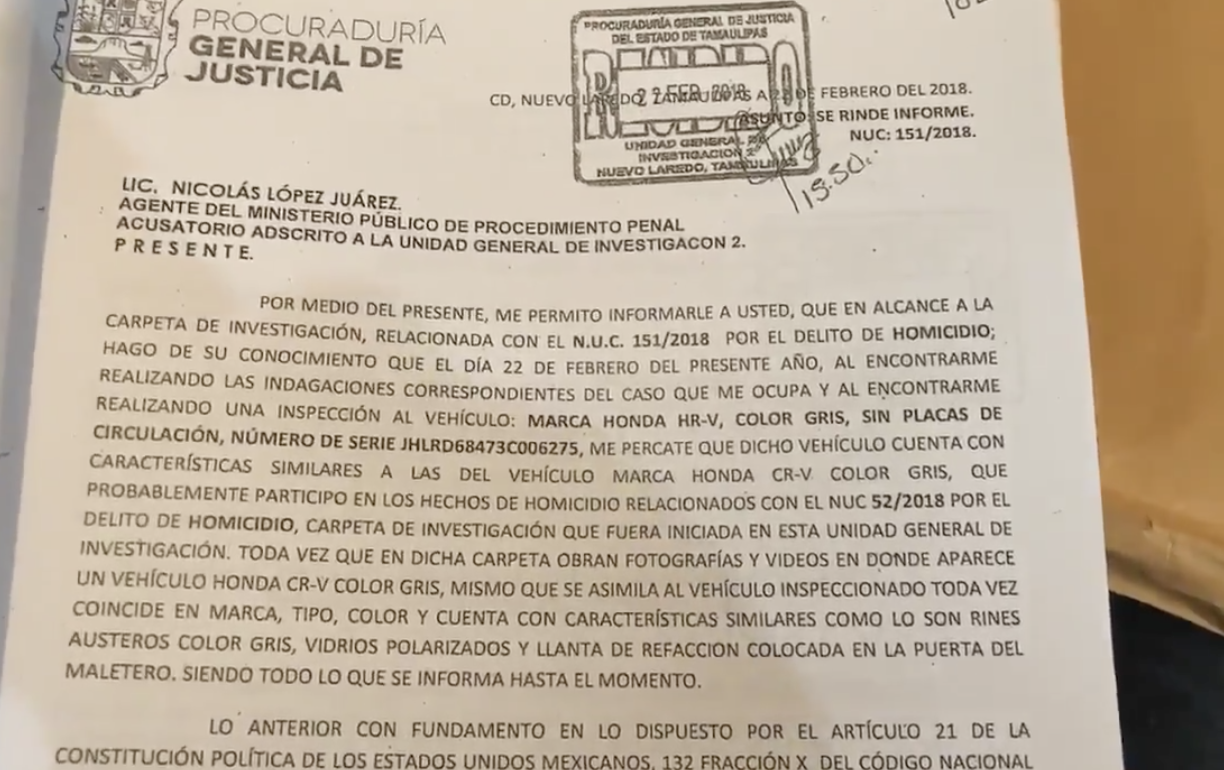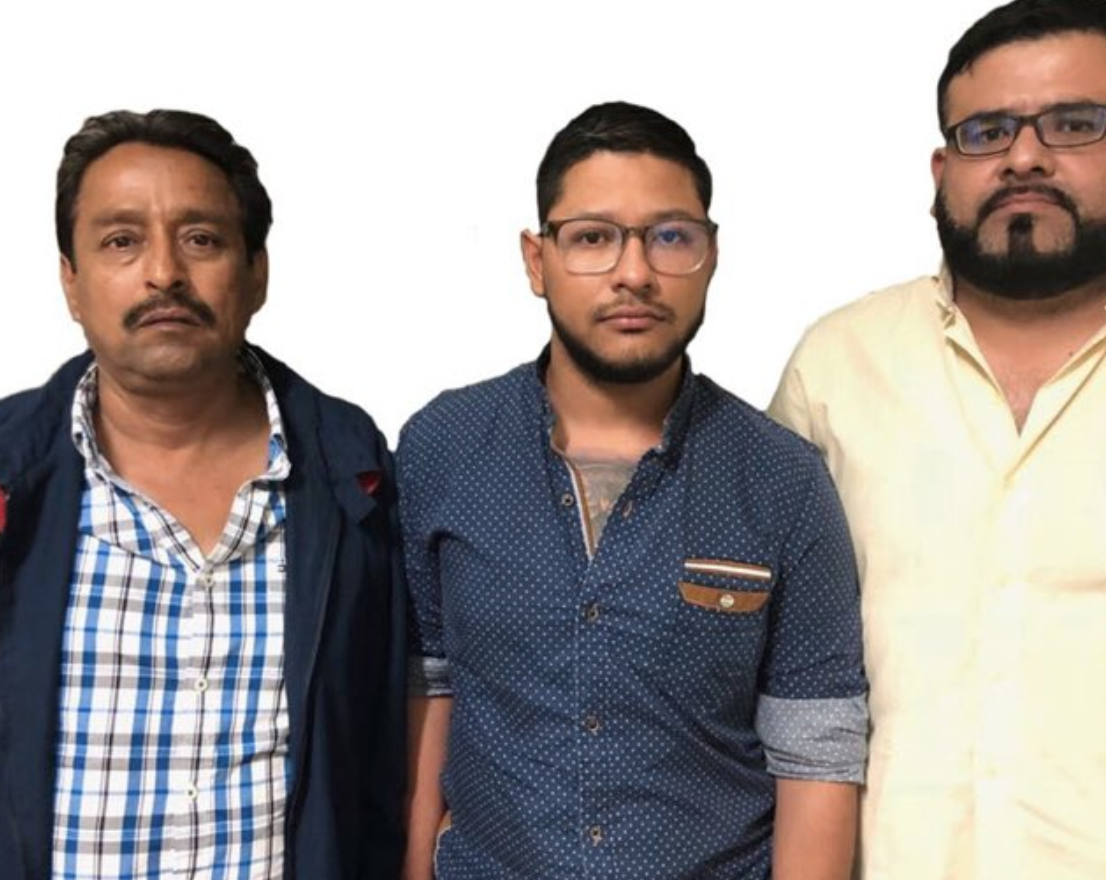The assassination of the Nuevo Laredo freelance journalist Carlos Domínguez Rodríguez in January of 2018 is one of the most significant things that have happened so far in Francisco García Cabeza de Vaca's term as governor. According to the state's version of events, the shocking and coldblooded murder implicated the nephew of Carlos Canturosas. The former mayor of Nuevo Laredo, Canturosas sought the PAN nomination for governor in 2016 which ultimately went to Cabeza de Vaca. It was rumored as early as June 2017 that Canturosas would be seeking the governor's office in the next election on the Morena party ticket.
The truth is that like nearly every politician in Tamaulipas, it's not exactly implausible that Canturosas could have profited from illegal activity like the misuse of funds or even colluding with organized crime during his political career. Organized crime and politics are inextricably linked in Tamaulipas and have been for years. It's not unthinkable that Canturosas might have dirt.
But self-dealing, misuse of official resources and taking moches is one thing; orchestrating a conspiracy with 6 people to murder a journalist is something else entirely.
On March 26, 2018, it was reported that Morena had nominated Canturosas as its candidate for mayor of Nuevo Laredo, an important step in the path to running in the next gubernatorial election. Two days later, the Tamaulipas Attorney General's office announced that it had executed 6 arrest warrants related to the murder of Carlos Domínguez Rodríguez against Canturosas' nephew, Rodolfo Cantú García; two former federal police officers, David Mejía Bravo and Adrian Montes Fernández; and three journalists, Gabriel Garza, Luis Valtierra and Jesús Zúñiga.

I've already written about this story in a previous post so I won't rehash it all here. The long and the short of it is that the people who were arrested, or at least those that survived the ordeal, were released eventually after it was proven that the prosecutors had fabricated false confessions in a plot to smear a political enemy of governor Francisco García Cabeza de Vaca.
According to reporting from Proceso:
The file of an incident that occurred in Nuevo Laredo, Tamaulipas 38 days after the murder of journalist Carlos Domínguez Rodríguez, which had been withheld, highlights the decision of the state authorities to opt for 'the fabrication of guilty before a media issue, rather than getting to the truth', says attorney Gabriel Regino García, member of the defense of the five accused of participating in the execution of the journalist.
According to witnesses, between 2:30 p.m. and 3:00 p.m. on January 13, 2018, Domínguez was driving his Ford Focus through the streets of Nuevo Laredo with his daughter-in-law and two of his grandchildren, when he was intercepted by a gray Honda CRV without license plates, from which two men in black ski masks got out. Not being able to get the journalist out of the car, one of them broke a window and stabbed him 21 times, and then fled.
Without apparent leads, since there was no history of threats against the journalist, who covered local political issues, the state attorney's office headed by Irving Barrios—a PGR official during Felipe Calderón's six-year term—offered a reward of $2 million pesos to anyone who provided information to find those responsible.
The matter was 'resolved' with the statements of the protected witness Juan Carlos Yáñez Osornio, who assured that on January 17, four days after the crime, he heard the criminal plot in Pachuca, Hidalgo, from the voice of the alleged perpetrators. Thus, after formalizing their complaint on March 15, at the central offices of the state agency, between the 24th and 27th of the same month, David Mejía and Adrián Montes, residents of Guadalupe, Zacatecas, were arrested as material authors of the homicide; and as the alleged mastermind, businessman Rodolfo Cantú García, nephew of the former mayor of Nuevo Laredo, Carlos Cantú-Rosas, as well as three of Domínguez's colleagues: Luis Valtierra, Jesús González and Gabriel Garza.
The oral trial of the case began on Wednesday the 31st in Nuevo Laredo. The alleged material perpetrators are being held in Altamira; the businessman at the Federal Center for Social Readaptation (Cefereso) in Rincón, in Nayarit, and the journalists in Nuevo Laredo, where Gabriel Garza died of a heart attack last April due to lack of medical attention. According to the lawyer Gabriel Regino, the dispersion of the accused is one of the obstacles that the defense has encountered and one of the causes for which the oral trial will take place more than a year and a half after the murder.
Interviewed in his office, Regino García, who was undersecretary of Public Security of the Federal District during the government of Andrés Manuel López Obrador, maintains that from the Tamaulipas attorney's office headed by Irving Barrios 'the evidence that showed that the detainees were innocent was hidden.'
The investigation folder NUC 151/2018, from the General Investigation Unit 2 of Nuevo Laredo, refers to a shooting incident that occurred in the early morning of February 21, 2018 between investigating agents and two armed men who were in a gray Honda CRV truck without plates. The four agents who participated in the shooting testified that at approximately 2:50 a.m. on the 21st they were in the courtyard of the attorney's office in Nuevo Laredo, when they noticed that the vehicle with tinted windows was 'trying to enter' the property, But the driver, upon 'noticing' the presence of the officers, 'started to back up' despite being ordered to stop. The agents boarded an official Ford F-150 truck and began a pursuit, which lasted five minutes and culminated in the confrontation, in which the occupants of the gray Honda CRV were killed. At first, one of the deceased was identified as Gerardo Álvarez Flores, 40, who received two bullet wounds. His body was handed over to his partner on February 24. The other body was claimed on February 26 by his sister. In the Automated Fingerprint Identification System (AFIS), he was identified as Daniel Rivera Lara, 37, originally from Monterrey, Nuevo León, prosecuted for crimes against health in 2001 in that entity.
In the vehicle, which was shot 14 times, experts from the Tamaulipas attorney's office found two black balaclavas between the front seats and the cup holders, as well as a "sharp weapon (knife) with dimensions of 20 centimeters of blade and brown wooden handle, 13 centimeters and two wide." This evidence had traces of blood.
The evidence is in the files and in the deposit of insured objects of the current State Attorney General's Office (FGE), which is still headed by Irving Barrios, says the lawyer. Additionally, it shows an official letter signed by an agent of the Investigative Police, dated February 22, in which he noted that Domínguez's case could have been related.
In a document addressed to the agent of the Public Ministry of Accusatory Criminal Procedure assigned to the General Investigation Unit 2 of Nuevo Laredo, Nicolás López Juárez—who opened the investigation folder for Domínguez's death—it is noted that the characteristics of the vehicle involved in the confrontation the previous day coincide with that described by the journalist's daughter-in-law in her statement about the murder of her father-in-law. In the aforementioned communication, the investigating agent Abner Jazzel Mozqueda Hernández alerts his superior that during the investigation of the confrontation he realized that the vehicle involved 'has characteristics similar to those of the gray Honda CRV vehicle, which probably participated in the facts of the homicide related to NUC 52/2018', the file number initially assigned to the Domínguez case.
Mozqueda Hernández points out that in said folder 'photographs and videos work', and that when compared with the truck involved in the braking, 'it matches in make, model, color and has similar characteristics such as plain gray wheels, tinted windows and spare tire placed on the trunk door.' In support of his hypothesis, Mozqueda attaches the inspection record of the insured vehicle after the February 21 confrontation and the photographs of the vehicle related to the journalist's homicide. In the file NUC 151/2018, of which Proceso has a copy, it is not noted that the agent's superiors had not responded to him, but it was requested that expert services were asked to examine 11 blood and fluid samples located in the truck from the shooting incident, as well as in objects located inside, such as the ski masks and the knife. It was also requested that the identified DNA 'be entered into the database with that address for a future comparison.'
The document includes an official letter dated March 29, 2018, signed by Eduardo Carlos Aguilar Garza, who presents himself as the private defender of Jesús González Zúñiga, Luis Ignacio Valtierra Hernández and Gabriel Garza Flores, requesting an 'authenticated copy of all the actions that make up the folder 151/2018'. Aguilar Garza explained in his letter that through social media he learned that in the shooting incident on February 21, 'a vehicle with the same characteristics used by the murderers of Carlos Domínguez, was used in various criminal acts.' On the same day that he received the notice, the agent of the Public Ministry Nicolás López Juárez denied the copy, arguing that Aguilar Garza's defendants 'are not part of the 151/2018 investigation.' Copies of that file, however, were sent to Ramón Ernesto Gómez Ochoa, the agent of the Public Prosecutor's Office for Accusatory and Oral Procedures Attached to the Victoria Regional Coordination, who requested them on March 31 from López Juárez.
It should be noted that on the orders of the general director of Accusatory and Oral Criminal Procedure Operation of the state attorney's office, Natanel Isaí Castelán Iturria, as of January 31 the Domínguez case, initiated in Nuevo Laredo, was assigned to Gómez Ochoa and the agent Adriana Márquez García, attached to the central offices in Ciudad Victoria. Attorney Gabriel Regino explains that on February 22, When the agent Mozqueda Hernández warned about the similarities of the vehicle used to execute Domínguez with the one in the shooting incident, 'the file of Mr. Carlos Domínguez was in Ciudad Victoria' and the attorney general's office 'was already looking for a way out of the case, and that's when they are already planning the fabrication of culprits through by offering a reward'. As he considers the probability that those responsible for Domínguez's murder are those who clashed with the police on February 21 is high, Gabriel Regino points out that it is up to the journalist's relatives to request a DNA comparison to confirm the hypothesis.
Professor of the Faculty of Law of the UNAM, Regino García announces that this case will be presented to the Inter-American Commission on Human Rights (IACHR) as a prototype of a 'fabrication of guilty parties.' To reinforce the point, the complaint shows that on May 21, one of the alleged perpetrators of the journalist's homicide, David Mejía Bravo, presented to the FGE before the FGE. In it, he admits that the protected witness, Juan Carlos Yáñez Osornio, offered him $500,000 pesos in exchange for assuming responsibility for the journalist's death. 'Juan Carlos told me that there would be no problem because he knew very well who was proposing the 'work' and who was organizing it, he told me that it was a lawyer named Natanael Castelán Iturria, (…) he was very good lawyer and would be in charge of fixing everything and also getting me out of jail in six days', it states in the document. Yáñez Osornio told him that Castelán was an official of the attorney general's office, so Mejía agreed to participate 'in said conspiracy to earn the promised payment and knowing that an official from the same authority was organizing everything, because I did not hesitate to trust him, without imagining what that he really intended and that they were lying and were going to leave me [in jail]'.
Gabriel Regino highlights that Mejía's complaint has not advanced because the person responsible for the investigation is the same one, that is, Castelán, while the Judicial Power in Tamaulipas has argued that it needs to study the case 'to see if the person who reported has any interest in the case, if any right affects them, that is, everything is closed'. For the lawyer, what he has warned as a defender is that 'the state of Tamaulipas shut down the investigation of the fabrication of guilty parties, and that is what we want to tell the IACHR: that there is an obstruction of justice, that what has been done in the case of the murder of Carlos Domínguez is to hide evidence and block an investigation of an act of corruption'.

After 18 months in prison for fabricated charges, the two journalists who had survived the ordeal, Jesús Zuñiga and Luis Valtierra, were aquitted and released along with Rodolfo Cantú García, David Mejía Bravo and Adrian Montes Fernández. Gabriel Garza died while in custody in April of 2018.
The case has been an enormous embarrassment to the Tamaulipas attorney general's office who have not been deterred in their quest to prosecute Carlos Canturosas for something. Recently, the state Financial Intelligence Unit (UIF) announced charges against Canturosas for the misuse of official resources during his time as mayor. His whereabouts are currently unknown.
But the thing about this case is that you don't have to give a shit about Carlos Canturosas to care about it. What happened to Jesús, Luis and Gabriel should never happen to any human being.
According to Jesús Zuñiga, the Tamaulipas police tortured him severely to try to get a confession incriminating Canturosas. The police beat and suffocated him with a plastic bag, and put him in a cell block in the jail where his torments also included sexual violence according to reporting from Proceso. According to Jesús, the police told them that it would stop if they gave them what they wanted and signed a false confession. He thought he was going to die. He said that he knew that if he gave them a false confession, their lives would be over. So he held on.
The most surreal thing about Tamaulipas politics and the state's unique version of 'criminal justice' is that facing off against that machine is like crossing the event horizon of a black hole. Truth becomes relative and distorted and no information or light can ever escape. The media in the US who are usually sensitive to the mistreatment of journalists in Mexico are suddenly unreachable and totally silent. In private, they'll tell you they pitched it but their editors shot it down. Sorry.
A perfect example of the warped version of reality at the intersection of politics and criminal justice in Tamaulipas is the story about the case from the Committee to Protect Journalists (CPJ), a supposedly impartial NGO. A day after the murder, CPJ presented the state's version of events via a telephone interview with state Attorney General Irving Barrios, and through Barrios' statements from an interview with Radio Fórmula on January 15.
The fact that CPJ would interview the attorney general in a state notorious for official corruption and which has a 100% rate of impunity for homicides and disappearances of journalists is unthinkable. Two of the last three governors before Cabeza de Vaca are currently awaiting trial for charges related to corruption, and Cabeza de Vaca's links to organized crime are well-documented. That violence against journalists is so often sanctioned by officials should have precluded an NGO dedicated to protecting journalists from accepting the state's version of events, particularly in this case which involved three other journalists. The most infuriating part is that in CPJ's article about the case, Jesús Zuñiga, Luis Valtierra and Gabriel Garza (RIP) aren't even referred to as journalists.
On July 26, 2020, Jesús and Luis were accepted into the federal protection mechanism for journalists. On October 19, 2020, a judge in Tamaulipas revoked the acquittal of Jesús, Luis and the others on a technicality. They now have warrants for their arrests. Their current whereabouts are unknown.
Their story has yet to be told in the english language media.

